A Visionary Journey of Dubai
By egor Sunday, 19 February 2017 12:39 PM
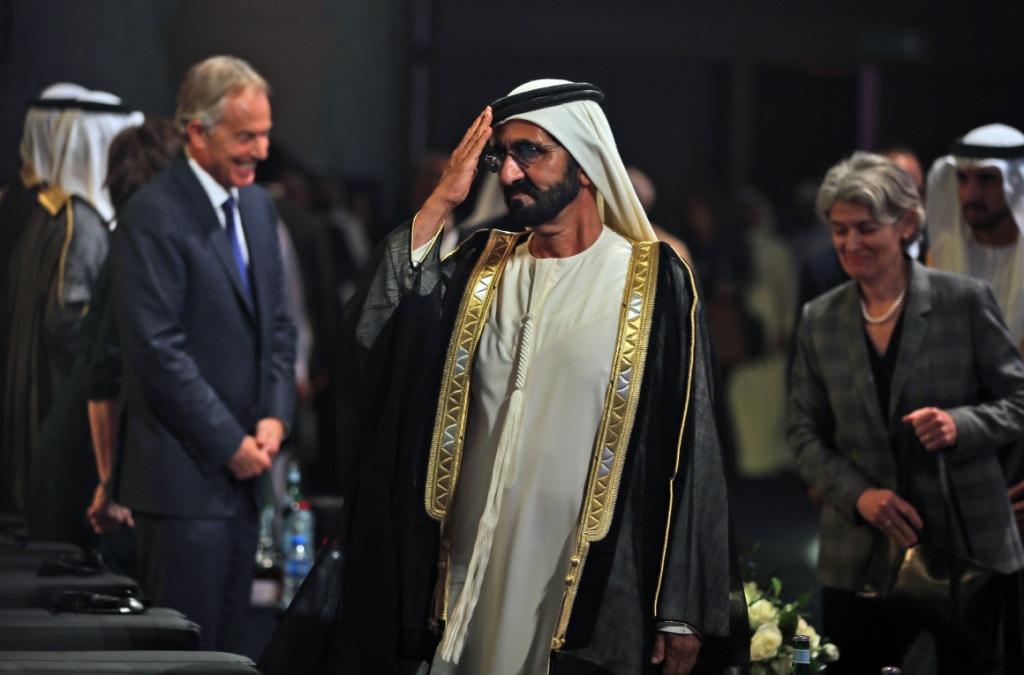
In fewer than three decades, Dubai has transformed itself from a regional centre to a global one. This success was not based on oil reserves, but on reserves of human talent, ingenuity and initiative inspired by visionary leadership. Based on the video ‘The Journey: HH Sheikh Mohammed bin Rashid Al Maktoum’ showing the transformation Dubai has undergone in the past 65 years.
Port Rashid in 1972
For centuries, Dubai has been known as ‘the city of merchants’. During the fifties and sixties it became an increasingly busy trading post for the entire Gulf region.
Port Rashid also referred to as Mina Rashid is a man-made commercial port in Dubai named after the late Ruler of Dubai Sheikh Rashid bin Saeed Al Maktoum. Opened in 1972, its location near to the city center and its all-new infrastructure has been instrumental in helping to develop Dubai as a major trading hub. At its opening, it had two gantry cranes and processed just 100,000 TEU’s annually. By 1978 the number of berths was increased to 35 - including five berths large and deep enough to handle the largest container vessels.
Dubai World Trade Centre in 1978
Dubai’s Sheikh Zayed Road highway is now a bustling skyline, a central business hub within a global city. But what started it all was the 39-storey Sheikh Rashid Tower inaugurated in 1979. It perfectly embodied Sheikh Rashid’s vision of a modern city that would attract the world’s leading companies. The first of its kind in Dubai, it soon turned into a major landmark and became a focal point for overseas businesses to establish their presence. Renamed Dubai World Trade Centre, today it is the region’s largest purpose-built complex for events and exhibitions and is featured on the 100 dirham banknote.
Over the years, the Dubai World Trade Centre has been extended to include numerous Exhibition Halls, Sheikh Rashid Hall and Maktoum Hall as well as the Convention Tower, Sheikh Saeed Halls and the Trade Centre Arena, giving rise to over one million square feet of space. The epicentre for business tourism in the region, the Dubai World Trade Centre powers the MICE sector through its size, resources, diversity of calendar and scale of events.
The opening of Jebel Ali Port in 1979
A pivotal development in the establishment of the UAE as a trading destination, Jebel Ali’s Free Zone (JAFZA) and port form one of the world’s major shipping and export hubs. Construction on the port began in the late 1970’s along with Jebel Ali Village (finished in 1977).
Officially established in 1979, Jebel Ali Port is the largest port in the Middle East and one of the biggest man-made ports ever built. The new expansion officially opened in June 2013, gives it an additional capacity of one million TEU taking the total capacity at the port to 15m TEU. Together with the new Container Terminal 3, which is now under construction, Jebel Ali Port will reach 19m TEU capacity by 2014 and will be able to handle 10 of the giant new generation vessels at the same time.
Today, JAFZA is a dynamic base for thousands of businesses, from over 100 countries, sustaining over 135,000 jobs and attracting more than 20% of the UAE’s foreign direct investment; all the while exceeding 50% of Dubai’s total exports, with a value for trade of $69bn.
The launch of Emirates airline in 1985
On 25th October 1985, Emirates flew its first routes out of Dubai with just two aircraft—a leased Boeing 737 and an Airbus 300 B4. Wholly owned by the Government of Dubai, it has since then evolved into a globally influential travel and tourism conglomerate known the world over for its commitment to the highest standards of quality. It has recorded an annual profit in every year since its third in operation. Its business includes: An award-winning international cargo division; A full-fledged destination management and leisure division; An airline IT developer.
With a fleet of more than 230 aircraft, it currently flies to over 140 destinations in more than 80 countries around the world, and its network is expanding constantly. Over 1,500 Emirates flights depart Dubai each week on their way to destinations on six continents.
In 2011 at the Dubai Airshow, Emirates placed the single largest aircraft order in dollar value in Boeing’s history when it requested an additional 50 777-300ERs, worth approximately USD 18 billion. The order also included 20 777-300 ER options valued at USD 8 billion, for a total of 70 aircraft valued at USD 26 billion.
Underscoring its incredible growth, the airline is currently the world’s largest operator of both the Airbus A380 and Boeing 777. In the financial year 2013/2014, Emirates carried 44.5 million passengers and 2.25 million tonnes of cargo.
Dubai Quality Award in 1994
The Dubai Quality Award was introduced in 1994 by Dubai's Department of Economic Development, of which HH Sheikh Mohammed is Chairman as a means of improving the standards of businesses operating in Dubai, and is presented to those companies that have demonstrated a commitment to best practices in their respective fields. It is based on the Excellence Model of the European Foundation for Quality Management (EFQM) where all nine criterion parts work as one complete system, such that any deficiency in one area will affect the score in other areas.
After all entries have been reviewed and short listed, the assessors visit the companies and later put forward their recommendations for award winners to the Supreme Committee of the Award made up of high-ranking government officials, prominent business people and experts.
The Dubai Quality Award includes the Dubai Quality Appreciation Programme for small and medium-sized organisations that have shown a commitment to excellence in their development. The winners of the Dubai Quality Award 2014 (DQA) in the Tourism sector were Jumeirah Zabeel Saray and Jumeirah Palm (Tourism).
Launch of the Dubai Shopping Festival in 1996
On February 15, 1996, an extraordinary concept that changed the retail landscape of the region forever became a reality – the Dubai Shopping Festival (DSF), came into the world with great fanfare and hope and, more importantly, offering the promise of revitalising trade in Dubai. As it turned out, the unique initiative launched by the Government of Dubai became a roaring success. Indeed, an event that was conceived to boost local business has now grown into the longest-running festival of its kind in the world and has tremendously boosted the profile of Dubai as a tourism destination offering extraordinary and life-changing experiences to visitors. The festival is the brainchild of His Highness, Sheikh Mohammed bin Rashid Al Maktoum, Vice President & Prime Minister of UAE and Ruler of Dubai, based on his vision to transform Dubai into a modern city, and a major trading and shopping hub of the region.
The extraordinary vision of HH Shaikh Mohammed bin Rashid Al Maktoum, Vice-President and Prime Minister of the UAE and Ruler of Dubai was to transform a desert city with limited oil reserves into a city that would make its mark for its non-oil trade.
The DSF logo selected by HH Shaikh Mohammed depicts a family of four against a shopping bag with the UAE flag’s colours. The first advertisement announcing the DSF appeared in the local publications in 1995 with a message from HH Shaikh Mohammed inviting public and corporate investors to invest in the DSF saying, “Over the last three decades, Dubai has gained international prominence as the City of Merchant Enterprise. This has been made possible largely by the spirit of trade and adventure exhibited by our trading community. The DSF 96’ is a celebration of this spirit.”The biggest shopping and entertainment extravaganza in the Middle East, Dubai Shopping Festival 2015 kicks off Dubai’s annual festivals and events calendar with a wide range of events, activities and promotions under the theme “20th Anniversary - A Journey of Celebrations".
The inaugural DSF attracted 1.6 million visitors with a total spend of Dh2.15 billion. From just a few shopping malls in its inaugural year, Dubai now boasts the world’s largest shopping mall. It is not just about the offers or the promotions anymore but Dubai’s uniqueness as a family tourism destination offering multiple experiences The DSF’s success as a mega shopping and entertainment extravaganza has also underlined the emirate’s ability to host large scale events.
Dubai Government Excellence Award in 1997
As the global environment became more competitive, Dubai needed to modernize ‘the way it does governance’. Therefore, Dubai Government Excellence Program (DGEP) was established to improve practices, results, and overall performance of the government sector in Dubai. Participating in it is obligatory for all governmental departments while semi-governmental departments are free to participate if they wish. Its vision is “to attain international levels of excellence in government performance in Dubai”.
One of its initiatives is the annual Dubai Government Excellence Award instituted in 1997, which incorporates 19 categories which are grouped in two sections: Institutional Excellence and Employee Excellence.
The private sector used to excel the governmental sector in performance, creativity and innovation, and flexibility. However, after DGEP was launched the public sector began to excel over the private sector, surpassing it in many areas such as proficiency, initiative, provision of distinguished services, transparency and others. Known as the change ‘champion’ in improving public services and the main contributor to the culture of quality and excellence it is also the first comprehensive government excellence program that can be found around the world.
The Dubai Internet City in 1999
Dubai Internet City (DIC), which was launched in 1999, is the Middle East and North Africa's largest ICT hub. Since the year 2000, DIC has successfully developed a prosperous ecosystem for technology organisations and has been one of the forerunners in carrying forward Dubai's vision of transitioning into a knowledge-based economy. DIC is home to Fortune 500 companies and multinationals, including global names such as Facebook and LinkedIn, as well as some of the region's most dynamic and successful technology SMEs and start-ups from all elements of the ICT value chain.
DIC provides access to an extensive multi-lingual talent pool with a variety of skills and industry expertise. It provides wide ranging facilities including state-of-the-art offices, a robust IT infrastructure, 24-hour security, retail services and hotels, spread across the business park's unique and tranquil landscape: an environment that helps ICT businesses develop, innovate and grow. DIC has fronted a bold initiative to support and nurture entrepreneurs, start-ups and SMEs through the creation of the In5 innovation hub and First Steps business centre.
The opening of Burj Al Arab Hotel in 1999
Hailed as ‘Dubai’s Dream Palace’ the luxury 5 Star hotel Burj Al Arab (Arabic for Tower of the Arabs) is called the world’s only 7-star hotel. It stands on an artificial island 280 m away from Jumeirah Beach. It was envisaged by Dubai’s then Crown Prince, HH Sheikh Mohammed bin Rashid Al Maktoum, as a means of diversifying the country’s economy away from oil into tourism.
Burj Al Arab was designed by architect Tom Wright of WKK Architects who wanted the 321-metre structure to rise into the sky on an island, giving it the illusion of being at sea. The project pushed the boundaries of design. Crowning the hotel was an enormous “floating” restaurant hanging in the air 27m away from the spine of the building to ensure its exclusive clients would enjoy unparalleled views as they dined. Further it had to be sealed against the searing desert heat, so it was fitted with a giant fabric wall to create the largest atrium in the world and form a unique feature both inside and outside the hotel. This innovation and many more ensured that the hotel when it opened amazed the world in December 1999. The hotel, which marks its 15th anniversary in 2015, has taken its place as a unique global landmark that has become synonymous with Dubai.
Dubai Smart Government in 2000
Dubai Smart Government is a pioneering initiative in the region to provide government online services across the spectrum of corporate and community life in the emirate. The Department officially directs and supervises the implementation of eTransformation in Dubai Government. It operates in harmony and integration with all the departments and entities that come under the Government umbrella in Dubai. The accomplishments made since the launch of the Dubai Smart Government project in 2000 are the result of joint efforts by all government departments. Initially called Dubai eGovernment, the Department’s name was changed in June 2013 to Dubai Smart Government, by HH Sheikh Mohammed in line with his initiative to transform to an era of smart government.
Dubai Smart Government Department offers many direct public services and other core services to government entities and government employees through its corporate website: www.dsg.gov.ae. It is also tasked with fully managing and supervising the official portal of Dubai Government: www.dubai.ae which features over 2,000 government services provided by Dubai departments and is constantly updated.
The launch of Dubai Media City in 2000
The Dubai Media City (DMC) was established in 2000. It was built by the Dubai government to boost UAE's media foothold and since its official opening in January 2001, the DMC has grown to become a thriving business community and a global media hub hosting both global and regional media companies. It offers media companies and independent media professionals a pro-business environment enabling them to operate with collective synergy and freedom while enjoying free zone benefits including 100 per cent business ownership and tax-free income, as well as value added services such as networking opportunities, venue management services, industry building programmes and government services.
Dubai Media City offers media and advertising companies in Dubai an ecosystem where they can showcase their products and services and get a chance to interact with some of the leading marketing companies in the UAE, and global media giants like Bertelsmann, CNBC, CNN, Forbes, MBC, Reuters, Showtime and Sony.
The Mohammed bin Rashid Establishment for Small and Medium Enterprises in 2002
As one of the most dynamic cities in the world, Dubai values new ideas and approaches to today’s challenges. The SME sector forms the central nerve of its economy constituting 95% of the total companies operating in Dubai, and includes about 42% of the total workforce as well contributing 40% of its gross domestic product (GDP).
Aspiring to transform Dubai into a global centre of innovation and excellence among small and medium businesses, HH Sheikh Mohammed bin Rashid Al Maktoum, Vice-President and Prime Minister of the UAE, in his capacity as the Ruler of Dubai, issued a law establishing the Mohammed bin Rashid Fund to support Small and Medium sized Enterprises.
It aims to support and finance projects of young entrepreneurs. One hundred projects will be financed every year. It will have the authority to give loans, to provide financial guarantees or to contribute to the projects. It will also have the mandate to seek financial and technical support for projects undertaken by community members or companies and institutions operating in the country.
Dubai Healthcare City in 2002
(DHCC) was launched in 2002 by the UAE Vice President, Prime Minister and Ruler of Dubai, HH Sheikh Mohammed Bin Rashid Al Maktoum, to meet the demand for high-quality, patient-centered healthcare. Today, it is home to two hospitals, over 120 outpatient medical centers and diagnostic laboratories with over 4000 licensed professionals occupying 4.1 million square feet in the heart of Dubai. DHCC combines the leading expertise of medical institutions and pre-eminent healthcare providers to deliver the A-Z of medical services.
Mohammed Bin Rashid Academic Medical Center (MBR-AMC) is the education and research arm of Dubai Healthcare City and aims to establish an integrated academic and clinical environment for excellent healthcare, education and research.
The Dubai International Financial Centre in 2004
DIFC is a strategic onshore financial centre, which provides a secure and efficient platform for business and financial institutions to reach into and out of the emerging markets of the region. Starting operations in 2004, the quality and range of DIFC’s independent regulation, common law framework, supportive infrastructure and its tax-friendly regime make it the perfect base to take advantage of the region’s rapidly growing demand for financial and business services.
DIFC fills the time-zone gap for a global financial centre between the leading financial centres of London and New York in the west and Hong Kong and Tokyo in the east. DIFC is unique in that it has a legislative system consistent with English Common law. DIFC has been designed as a ‘city within a city’ that provides a complete range of business and lifestyle facilities for today’s professionals. The infrastructure within the elite financial district features: features ultra-modern office space, retail outlets, art galleries, residential apartments and hotels.
The opening of Palm Jumeirah in 2008
The one attraction which stunned the world and placed Dubai firmly on its tourist map is the Palm Jumeirah, the world’s largest man-made island. It also established the emirate as one of the most ambitious cities. It is comprised of a two kilometre long trunk, a crown made up of 17 fronds and a surrounding crescent. The first of three such islands that comprise 'The Palm Trilogy', Nakheel's signature development, it will be followed by The Palm Jebel Ali and The Palm Deira. It is located on Dubai’s Jumeirah coastal area.
Following a number of years of feasibility studies, the Palm Jumeirah was launched in 2001, with reclamation starting in the same year. From the end of 2006, the island's first residences – comprising 4,000 luxury villas and apartments were handed over during a phased period. Since then, the tourism, leisure and retail elements of the island have been developed, creating a spectacular, world-renowned residential and tourism destination.
The Palm Jumeirah has a number of hotels such as The Atlantis, The Palm, The Fairmont Palm Hotel and Resort, Kempinski Hotel and Residences, Jumeirah Zabeel Saray and Rixos, the Palm Dubai.
Dubai Metro in 2009
9.9.2009 will be remembered as a red letter day by Dubai’s residents as it welcomed a most important transport option into their lives opening up a world of opportunities to explore the city and discover its numerous tourist attractions through a fast, reliable, convenient, efficient, air conditioned mode of affordable transport extremely pleasing in blue and silver. And regardless of class, almost everyone hops into it.
At present it has two lines: the Red Line, completed in April 2010 and the Green Line opened in September 2011. Two more lines are planned. The intention is for 320km of metro lines to be in place in Dubai by 2020. In February 2012 the Dubai Metro entered the Guinness Records Book as the longest driverless, fully automated metro network with a route length of 74.69 kilometres. The trains run underground as well as on elevated viaducts designed to enhance the urban architecture along the route. Select 'feeder bus routes' allow commuters to travel from major locations in and around stations.
The 52.1km Red line from Al-Rashidiya to Jebel Ali has 29 stations, four of which are underground while the 23km Green line has 18 stations, two of which are transfer stations shared with the Red line and is extended to serve the Deira and Bur Dubai central areas, up to the Burjuman and Wafi shopping centres. The trains have a maximum speed of 90km/hr, forming a round trip of two hours and 23 minutes for the Red line and one hour and 23 minutes for the Green line.
The Burj Khalifa in 2010
Scaling silently upwards and seemingly reaching for the sky, the world’s tallest building Burj Khalifa perfectly indicates Dubai’s ambitious stance as a worthy city and as a tourist destination of repute. It is also its most inspiring monument urging one to always aim high and reach for the stars.
Hailed as a stunning work of art and an incomparable feat of engineering, in concept and execution the Burj Khalifa has no peer. It is also an unprecedented example of international cooperation, an aesthetic union of many cultures and a symbolic beacon of progress.
At over 828 metres (2,716.5 feet) and more than 160 stories, Burj Khalifa holds several records: It is the Tallest building in the world; Tallest free-standing structure in the world; Highest number of stories in the world; Highest occupied floor in the world; Highest outdoor observation deck in the world; Elevator with the longest travel distance in the world; Tallest service elevator in the world.
The tower is composed of three elements arranged around a central core and is an abstraction of the Hymenocallis flower. The central core emerges at the top and culminates in a sculpted spire. Viewed from the base or the air, Burj Khalifa is evocative of the onion domes prevalent in Islamic architecture.
Over 1,000 pieces of art from prominent Middle Eastern and international artists adorn Burj Khalifa and the surrounding Mohammed Bin Rashid Boulevard many of them were specially commissioned by Emaar to be a tribute to the spirit of global harmony symbolic of Burj Khalifa being an international collaboration.
The winning of the bid in 2013 to host World Expo 2020
27th Nov 2013 will be remembered as a historic day by Dubai residents and expats as the dynamic city won its bid to host the prestigious World Expo 2020. HH Sheikh Ahmed bin Saeed Al Maktoum, Chairman and Chief Executive Emirates Airline & Group, described the win as a ‘momentous milestone’.
What is the World Expo?
Since the first Great Fair of 1851, World Expos have continued to be one of the largest and most enduring global mega-events and are held every five years over a six month period. World Expos attract millions of visitors to explore new innovations, ideas, scientific and technological advances. It is a gigantic event that gives a boost to new and current industry and ultimately aims to bring about global change.
Dubai’s winning theme Connecting Minds, Creating the Future, will turn the spotlight on the city as it hosts a forum to discuss important global issues such as sustainability, mobility and opportunity. It also echoes the powerful spirit of partnership and co-operation that has driven the UAE’s success and will have the sub-themes of: Mobility, Sustainability & Opportunity. This will be the first time the World Expo has been held in Middle East, North Africa and South Asia (MENASA). Home to people from over 200 different nationalities, there has never been a more fitting place to host the World Expo than Dubai, located at the crossroads of the world.
Expected to attract 25 million visitors, it will be held from 20 October 2020 to 10 April 2021 and will launch the UAE’s Golden Jubilee celebrations. Its venue is located equidistant between Abu Dhabi and Dubai and will be serviced by three international airports and a world-class road and transport system. The 438-hectare site includes a dedicated gated 150-hectare Expo area, and a surrounding residential, hospitality and logistics zone.
Big economic growth
Dubai has catapulted into the world’s limelight in one of the shortest time span of three decades to date. From 1975 through 2008, over a 33-year span, Dubai’s economy grew phenomenally, making it the fastest-growing economy in the world over this period, says a new study by the Dubai Economic Council which noted that while the growth was uneven, for the past 15 years it had reached “an extraordinary pace for international standards”.
Enjoying a strategic location Dubai serves as the biggest re-exporting centre in the Middle East. Its total international trade has grown on average by over 11% per year since 1988 and regional economic growth and liberalization should boost demand further. Its easy accessiblility is evident by the fact that it is served by over 120 shipping lines and linked via 85 airlines to over 130 global destinations and adopts an open policy - no exchange controls, quotas or trade barriers.
The Institute of International Finance has given an upbeat assessment in its latest forecast. “We see Dubai growing at 5.6 per cent in 2014, driven by tourism, transportation, and trade,” said Garbis Iradian, deputy director for Africa and the Middle East at the IIF.
The Dubai Department of Economic Development, or DED, targets 4.7 per cent and five per cent growth for the emirate in 2014 and 2015, respectively as population growth accelerated to five per cent in 2013, exceeding government forecasts of 3.8 per cent, researchers from BofA Merrill Lynch Global Research said in a report. In its latest review, the International Monetary Fund (IMF) increased its growth forecast for the UAE, the Arab world’s second-biggest economy, citing rising real estate prices and Dubai’s World Expo 2020 win. The IMF said the UAE is set to grow 4.4 per cent in 2014, compared with an estimate of 3.9 per cent in October.
Top tourist destination
Dubai’s world-class infrastructure, strategic global location, investment-friendly economy and cosmopolitan nature will continue to play a significant role in driving visitor growth. It has emerged as the fifth ‘Most Popular Destination in the World’ according to a new survey, beating New York and Istanbul to grab a place in the top five. Now in its fourth year, the MasterCard Global Destination Cities Index provides a ranking of the 132 most travelled cities from around the world. According to the study, Dubai is expected to overtake Paris and Singapore within five years and secure its position as one of the top three global destinations.
Aviation has proved to be an indispensable catalyst for the growth of Dubai's tourism industry enhancing connectivity multifold. In 2013, Oxford estimated that passengers could connect from Dubai to 25 cities (or 81% of world cities) with populations of over 10 million people. Overall, Dubai had direct passenger flight connections to 149 cities with populations of over 1 million people. It was ranked as the fourth air hub in the world by international connectivity, representing a growth of 44.6 per cent in the last five year.
Using industry growth forecasts and modelling projections based on current expansion plans for Dubai International (DXB) and Al Maktoum International at Dubai World Central (DWC), it is estimated that the overall economic impact of both aviation and tourism related activities will rise to a robust $53.1 billion in 2020.
By 2020, it is estimated that Emirates will fly 70 million passengers, and the airline and its partners are already progressing plans for the right infrastructure to be in place to support and capitalise on passenger growth. The same year, Dubai expects to welcome over 20 million visitors for Expo 2020. Projects to support the six month mega-event in Dubai are already underway.







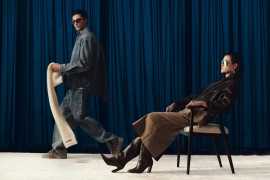












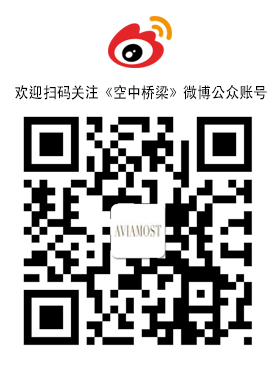

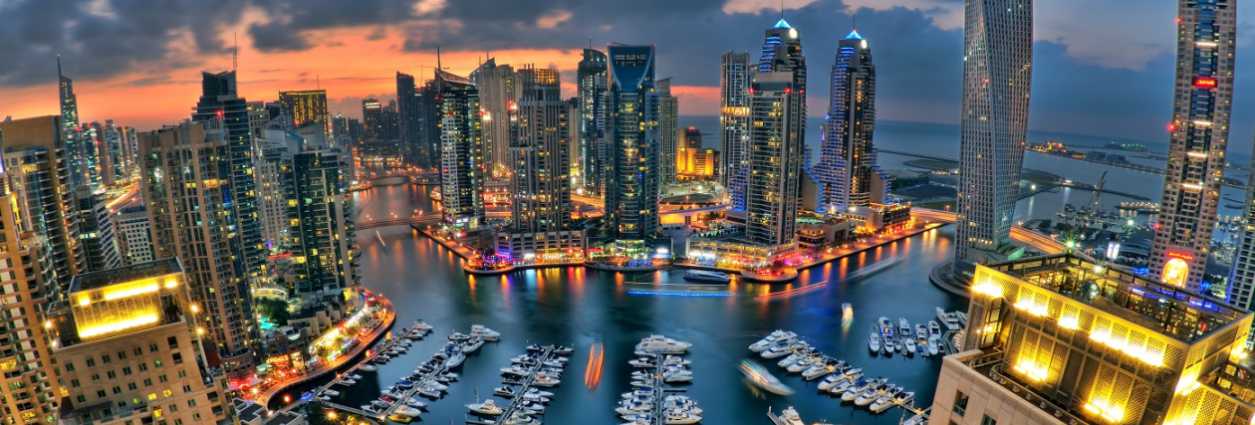




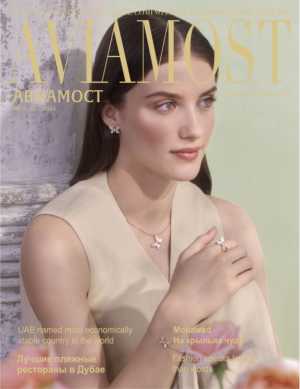

Add new comment